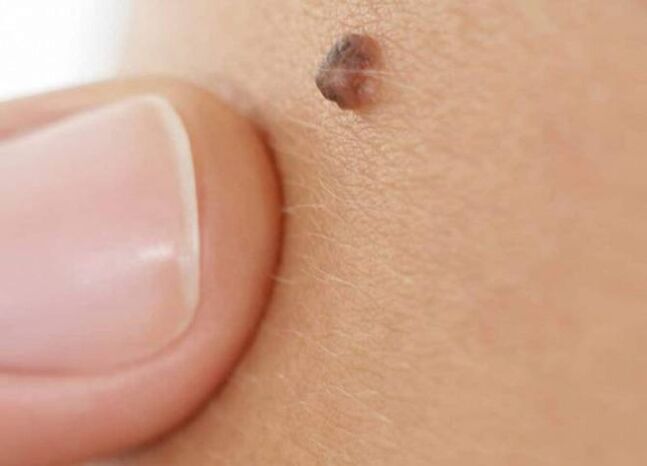Human papillomavirus is one of the most common viruses, present in 90% of the world's population. Most of its operators didn't even know it existed and didn't find any suspicious signs in themselves. That's how it became common.
What is a papilloma?
Papillomas are benign pathological formations of viral etiology. The appearance of papilloma is caused by the action of the human papilloma virus (HPV). On the skin, it usually manifests itself in the form of cosmetic defects - warts and genital warts, in the throat it causes respiratory failure, on the mucous membranes of internal organs it causes bleeding and ulcers. There are 27 types of HPV - some of which are safe for health and others that can develop into malignant tumors and cause cancer.
When identifying, special attention should be paid to women because they are at high risk of developing a cervix. Pregnant women during pregnancy are at risk of infecting their children.
HPV is characterized by a latent (latent) process, where although a person has strong immunity, the virus does not manifest in any way (the incubation period varies from 2 weeks to several years). Under the influence of various factors, the virus is activated, multiplied and manifested clinically.

Causes of infection with papilloma virus
HPV infection route:
- unprotected sex
- Contact with the skin and mucous membranes of an infected person
- Use the wearer's personal items
- When visiting public places with high humidity and high crowds (swimming pools, saunas, beaches)
The most common is sexual transmission of the virus, and family routes are rarely documented because the virus has a short survival time in the environment.
Activation of the virus is facilitated by:
- decrease in immunity
- infectious disease
- upset stomach
- worsening chronic disease
- Pregnant
- Long-term use of multiple medications (antibiotics, anticoagulants, etc. )
- smoking, drinking
- severe stress
Microtraumas, cracks, abrasions, and other injuries to the skin promote HPV penetration.
papilloma symptoms
Symptoms depend on where it forms and the type of HPV. The first "bells" about the presence of the virus are external manifestations in the form of genital warts (usually on the private parts) and warts (usually on the face, neck, extremities).
Less commonly, papillomas are accompanied by the following symptoms:
- peeling, itching, redness (skin)
- discomfort when walking (genitals)
- discharge from the nipple (mammary duct)
- Difficulty breathing (larynx)
- Painful bowel movements (intestines)
Diagnosis of papilloma
Diagnosis is made by a STD, dermatologist, immunologist or gynecologist/urologist.
- Clinical Exam - Visual examination and conversation with the patient.
- Laboratory and instrumental analyses are prescribed to obtain a complete picture of the disease:
- General and biochemical blood tests
- PCR test (polymerase chain reaction) - determines the type of virus and how much it is in the body.
If the only treatment is excision of the papilloma, the material is also biopsied for cytology and tumor risk determination.
treatment method
There are no drugs or methods that can completely eliminate HPV from the human body. The impact is only for the consequences of the virus. General antiviral therapy is suitable for highly carcinogenic virus types located in the anaerobic zone. Patients with a previous diagnosis of papilloma are advised to systematically examine and use barrier contraception to avoid spreading the virus to their partners.
Removal of papillomas is recommended because the virus in the epithelial cells can cause them to multiply, forming new papillomas or existing papillomas can regenerate.
Depending on the location and symptoms of the papilloma, they employ the following methods of removal:
- Laser Surgery - Treating papilloma with a surgical laser beam. This method does not require hospitalization and the damaged area heals quickly. Lasers are used on visible parts of the face and body.
- Radiosurgery is a non-contact exposure to high-frequency radio waves under its influence to remove tumors. This method is considered effective but expensive.
- Cryodestruction - Freeze tumors with liquid nitrogen. Scars may remain on exposed areas.
- Chemical destruction - cauterization with chemical acid. The procedure is very sensitive, with a high risk of contact with adjacent tissue and chemical burns.
- Surgical excision - rarely used in cases where malignant process is suspected.
- Folk remedies - use folk remedies (garlic, celandine, lemon balm, cabbage leaves, castor oil, etc. ) to moxibustion lesions
Currently, vaccines have been developed to protect against highly carcinogenic virus types (16th and 18th) used in many countries.
To prevent this disease, protective sex, use of personal hygiene products, boosting the immune system, and regular check-ups with an immunologist and gynecologist are recommended. If you notice symptoms of HPV, it is advisable to seek immediate medical attention.














































































